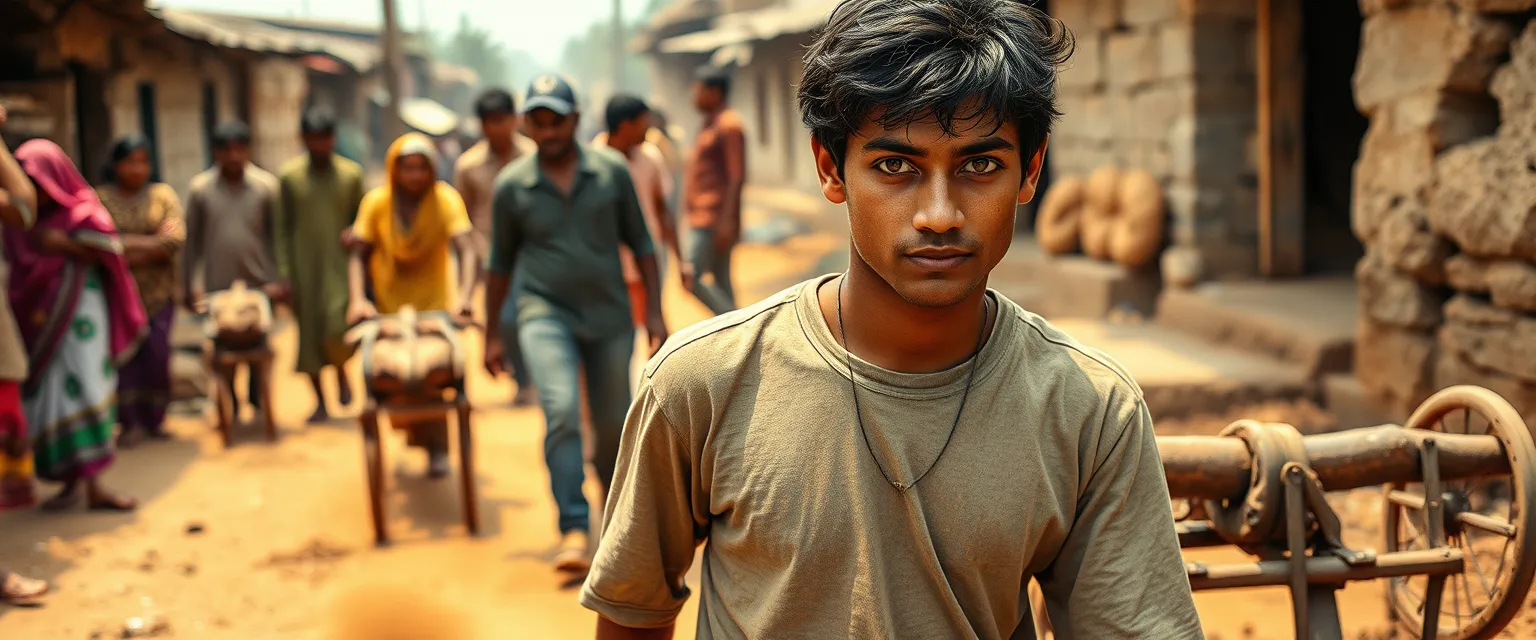San, a young man with an unyielding passion for agriculture, strode through the dusty streets of rural India, his worn-out sneakers kicking up small clouds of dirt with each step. His bright, inquisitive eyes, the color of freshly polished copper, sparkled with an intensity that bordered on fervor as he surveyed the parched fields that stretched out before him. The villagers, weathered and worn from generations of toil, watched him with a mixture of curiosity and skepticism, their calloused hands resting on the hafts of their worn wooden plows.
San's dark hair, cropped short in a practical style, was always slightly tousled, as if he'd just rolled out of bed and rushed out into the fields. A smudge of soil on his left cheekbone, a souvenir from an earlier experiment gone awry, only added to his rugged, endearing charm. His slender fingers, deft and sure, were always stained with the rich, loamy scent of the earth, a testament to the countless hours he'd spent coaxing life from the reluctant soil.
Born in the small village of Kavali, in the heart of Andhra Pradesh, San had grown up surrounded by the rhythms of the land. His father, a humble farmer, had instilled in him a deep respect for the ancient traditions of Indian agriculture, as well as a keen sense of innovation and experimentation. As a child, San would spend hours watching his father's hands move deftly over the soil, the seeds, and the tools, mesmerized by the dance of cultivation. He would help his mother, a skilled weaver, collect wild herbs and flowers to create vibrant, natural dyes for the village textiles.
As he grew older, San's fascination with the land only deepened. He devoured books on permaculture, organic farming, and sustainable agriculture, pouring over diagrams and illustrations, his mind racing with the possibilities. He began to experiment, quietly at first, testing new methods and techniques on small, hidden plots of land. The villagers, initially wary of his unconventional approaches, soon grew to appreciate the bounty of his harvests, the vibrancy of his crops, and the resilience of his soil.
San's vision was nothing short of revolutionary: to transform the rural landscapes of India, to awaken the dormant potential of the land, and to empower the villagers to reclaim their relationship with the earth. He dreamed of creating self-sustaining ecosystems, where every component – from the microorganisms in the soil to the birds that flitted through the trees – worked in harmony to produce abundance and beauty.
As he walked, the villagers began to stir, their faces creasing into smiles as they recognized the young man who had brought new life to their parched fields. Children, their dark eyes shining with excitement, chased after him, laughing and calling out in Hindi, "San bhaiya, San bhaiya!" – Brother San, Brother San! The air was alive with the sweet scent of blooming neem trees, and the soft, golden light of the setting sun cast a warm glow over the landscape.
San's path was not without its obstacles, however. The entrenched interests of the agro-industrial complex, the entrenched bureaucracy, and the weight of centuries-old traditions all threatened to stifle his vision. There were those who saw him as a troublemaker, a disruptor of the established order, and they would stop at nothing to silence him. Yet San remained undeterred, driven by a fierce determination to awaken the sleeping giant of Indian agriculture, to unleash a new era of prosperity and plenty upon the land.
In the fading light of day, as the stars began to twinkle like diamonds in the night sky, San stood tall, his eyes aglow with an unwavering conviction. He knew that the journey ahead would be long and arduous, but he was ready to face the challenges, to till the soil, to plant the seeds, and to nurture the growth of a brighter, more sustainable future for the people and the land he loved.
